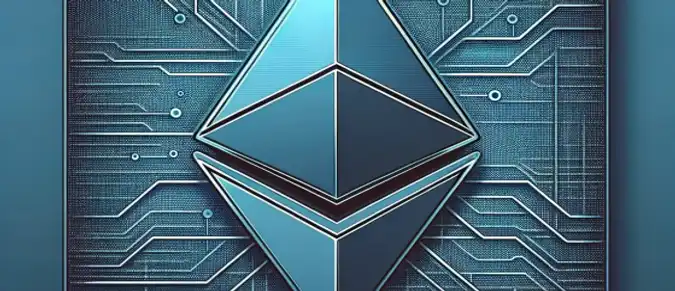Ethereum is the second largest cryptocurrency in the world after Bitcoin, its price rose to an all-time high of $4,868 in early November 2021. It is a global platform for running decentralized applications (dApps).
Contents:

Creation in Ethereum
Ethereum was invented by programmer Vitalik Buterin in 2015, on the heels of Bitcoin. He decided that bitcoin is like a pocket calculator, designed for one thing, and it does it very well, but you can't do anything else with it. So Buterin created Ethereum, a blockchain network with a linked cryptocurrency, called ether (ETH), with the potential to do much more.
Blockchain Ethеreum – essentially a ledger, designed to add data. After that, the information cannot be changed or deleted. The blockchain consists of millions of transactions. They are connected through smart contracts into blocks that form a sequence - a complete record of the history of Ethereum. Blockchain captures instantly everything that happens. A copy of each transaction is distributed throughout the Ethereum network. Each node keeps a copy of it.
Blockchain uniqueness
Ethereum's performance has attracted both traditional and institutional investors. Ethereum provides you with the following benefits:
| Feature | Description |
|---|---|
| Contracts | Ethereum has a high level of performance and provides the basis for smart contracts. |
| Gas | Gas in Ethereum involves additional fees, which are needed to pay for transactions and ensure the smart contract operates correctly. |
Each operation requires a certain amount of gas. The more complex smart contracts are, the more gas they require. In the blockchain, gas serves as a measure of computing power. Ether is sold on exchanges, so its market price changes frequently. Gas separates the cost of computational work in Ethereum from the market price of Ethereum. When a user makes a transaction, he pays for gas in ETH. Ethereum 2.0 - a major update, designed to increase the scalability of this blockchain platform through major changes to its architecture. Key changes in Ethereum 2.0:
- transition to the Proof-of-Stake consensus algorithm (POS);
- introduction of sharding technology. This means that the blockchain will be divided into (shards) managed segments, each of which will have parallel execution of operations;
- new eWASMyu virtual machine. It supports smart contracts that have been developed in other popular programming languages.
The update is being implemented in several stages. Ethereum has already switched to the POS algorithm, and the exact deadlines for completing all of its points are unknown. According to rough estimates, the work will be completed in 2023-2024.

NFT on blockchain
The key driver of the Ethereum blockchain - the growth of NFTs. Their popularity has grown due to the ERC-721 standard. Almost every valuable NFT is backed by the Ethereum blockchain, including CryptoPunks, Bored Ape Yacht Club and Art Blocks. Many new Ethereum users have been attracted to its network to invest in NFTs, so if NFTs continue to make their way into the mainstream, it is likely that Ethereum will continue to gain adoption. While other platforms like Solana and Avalanche have NFTs, the market for non-fungible tokens on these blockchains is smaller than Ethereum. Ethereum also allowed users to issue tokens. To do this, they created a single standard ERC-20. The value of these tokens lies in a certain benefit within a certain application. For example, staking or farming tokens. Access to a private club or community voting. Ethereum became the first popular blockchain for decentralized applications, which were monetized through their own tokens.




